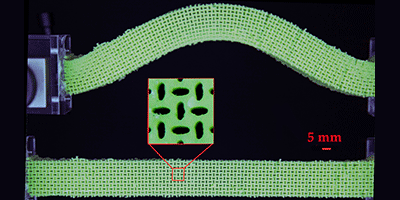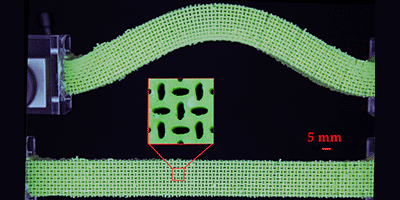Runaway Buckling
Pushing hard on the ends of an elastic beam can cause it to buckle, with a kink forming in the middle of the beam. Corentin Coulais from the University of Leiden in the Netherlands and colleagues have now shown that they can adjust a beam’s stability, after it has buckled, by adding a series of elliptical holes into the beam material. The finding could allow these so-called metabeams to be used as mechanical switches with well-defined buckling properties.
For a uniform, slender elastic beam, buckling isn’t necessarily detrimental to the beam’s ability to carry a load. If the force applied to the beam is only just over the threshold needed to make it bend, the kink that the beam develops is stable: further bending of the beam requires a bigger applied force. The authors show that this isn’t the case when the beam is very wide or if holes are introduced.
Coulais et al. cast wide beams and hole-containing metabeams from silicon rubber using various molds—those for the metabeams were 3D printed. As the holes in the metabeams became more circular the researchers observed that the beams became unstable to bending: Now applying the threshold force caused the beam to bend as before, but the kink kept growing. This “runaway buckling” was also seen in the wide solid beams. Simulations performed by the authors suggest that this behavior originates from differences in the material’s resistance to stretching and squeezing that arise when the beam is very wide, or has near-circular holes.
This research is published in Physical Review Letters.
–Katherine Wright





